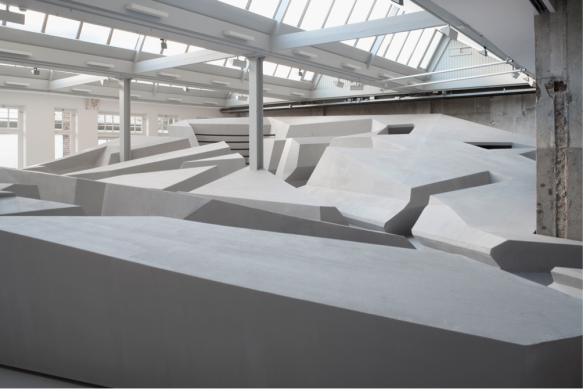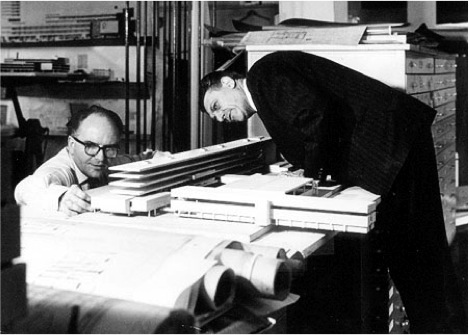Recently Ronald and Erik Rietveld were inaugurated as members of the Society of Arts at the Royal Netherlands Academy of Arts and Sciences (KNAW), which promotes cross-fertilization between the sciences and the arts. Other artists at this Academy are Anton Corbijn, Arnon Grunberg, Barbara Visser, Heddy Honigmann, Iris van Herpen, Jaap van Zweden, Louis Andriessen, Pierre Audi, Paul Verhoeven, read more...Below you will find a video of our inauguration speech at the KNAW (in Dutch) and an English translation of our text.
Inauguration speach by Ronald & Erik Rietveld at KNAW, d.d. April 1, 2016.
“For us this is a great honor! The Royal Netherlands Academy of Arts and Sciences (KNAW), where the arts and the sciences meet, has invited us to become members as a duo; a duo that operates at the intersection of architecture, visual art and philosophy.
 What you see here is a philosophical worldview. Philosophers normally make a world in words, typically in books without pictures. This is a materialized and experiential translation of my philosophical research at the University of Amsterdam. It is a landscape of affordances. Affordances are the possibilities for action that the environment offers us. Your seat affords you to sit on it, a book affords reading, etc. The installation that we built offers many opportunities for supported standing, leaning and hanging, and invites you to frequently switch positions and postures throughout the day. This installation also represents my position within the philosophy of the cognitive sciences. Cognition is not something that takes place purely in our heads. Cognition is made possible and supported by the affordances available in our human ecological niche.
What you see here is a philosophical worldview. Philosophers normally make a world in words, typically in books without pictures. This is a materialized and experiential translation of my philosophical research at the University of Amsterdam. It is a landscape of affordances. Affordances are the possibilities for action that the environment offers us. Your seat affords you to sit on it, a book affords reading, etc. The installation that we built offers many opportunities for supported standing, leaning and hanging, and invites you to frequently switch positions and postures throughout the day. This installation also represents my position within the philosophy of the cognitive sciences. Cognition is not something that takes place purely in our heads. Cognition is made possible and supported by the affordances available in our human ecological niche.

What you see here is a spatial thinking model. This dissected monument represents our way of thinking and working. The work:
– breaks through existing conventions,
– breaks through indestructible structures,
– breaks though different disciplines, and
– breaks though past and present, looking for new meaning in the future.
This installation, which we provocatively named The End of Sitting, is also a vision on the office of the future, of 2025. It explores what a world without chairs and tables might look like. In the coming years we would like to make more of these visual explorations of the future. This fits perfectly with what has become both a tradition of the KNAW as well as a strategic priority of the scientific part of the Academy, namely the making of future explorations. However, there is an important difference. The foresight studies to be made here at home have typically been written reports. What we want to do is start from our own fascinations and make imagination central to our foresight in a visual way. We would like to build foresight; to materialize thinking models. By building our visions on the future we make them tangible and sensible to people. We call these visions that we build at the intersection of visual art and architecture, “architectural art installations” or, ‘bouwkunst’ in Dutch (literally translated as building-art).
More than ever, the field of architecture needs new types of ‘bouwkunst’:
– A ‘bouwkunst’ that goes beyond the pragmatism and efficiency thinking of today.
– A ‘bouwkunst’ that develops new spatial thinking models.
– There is a need for a ‘bouwkunst’ that encourages new radical experiments, free from conventional constraints.
In short, working from within the KNAW, we wish to dedicate ourselves to making architectural art installations that show society new vistas.”

























